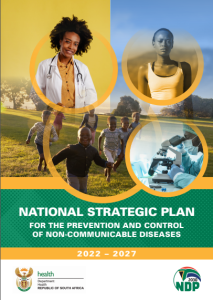 Celebration time. It’s happening on 31 May 2022 in Somerset East, Eastern Cape, as part of a World No Tobacco Day event. At last, the NCDs+ civil society can breathe a collective sigh of relief. IT is the long-awaited National Department of Health’s (NDOH) NCDs+ policy for 5 years until 2027. The about-to-launched plan is a compromise, but it is way better than the early drafts. As Churchill may have said, “we are at the end of the beginning”.
Celebration time. It’s happening on 31 May 2022 in Somerset East, Eastern Cape, as part of a World No Tobacco Day event. At last, the NCDs+ civil society can breathe a collective sigh of relief. IT is the long-awaited National Department of Health’s (NDOH) NCDs+ policy for 5 years until 2027. The about-to-launched plan is a compromise, but it is way better than the early drafts. As Churchill may have said, “we are at the end of the beginning”.
If the SANCDA+ had left the NDoH decision makers to their own devices, the 3rd NCDs+ National Strategic Plan (NSP) would have been done and dusted in 2019 without credible transparency and authored mainly by a WHO Country Office appointed contractor. And that version looked remarkably similar to the previous failed 2nd NCDs plan 2013-2017. That plan wasn’t funded, implemented and only externally reviewed/evaluated in 2021.
Yes, it is the SANCDA+ activism that put a spanner in the works. Our early enthusiastic cooperation soured as it became clear that the plan would never be implemented or funded. It moved the SANCDA+ from advocacy to activism using similar tactics as HIV activists in the early part of this century. Memories are short but what is good for the goose is good for the gander.
What is different about the 3rd NCDs+ NSP?For a start, the NCDs+ is inclusive and not exclusive and covers prevention and management. But, most importantly, it puts people living with NCDs+ and their carers at the centre of the plan. And the focus is on integrated people-centred health services and not on building more silos. Implementation and funding are squarely the domain of the province.
The South African government is excellent at writing policy. And this strategy is a fine example but with no transparent NCDs+ budgets at a provincial level. And provincial plans still need to be written. And at the district level, it seems to rely on National Health Insurance. And that might just be the rub. As Churchill may have said, “we are at the end of the beginning”.
